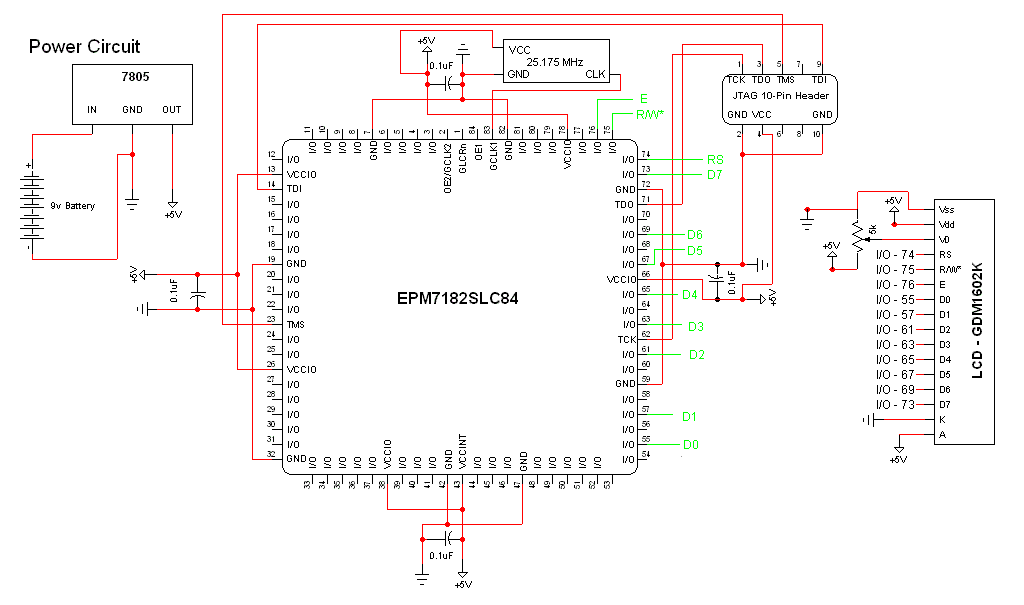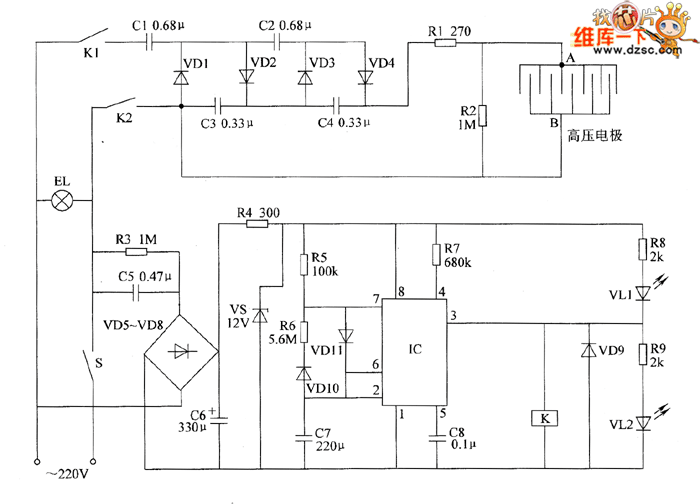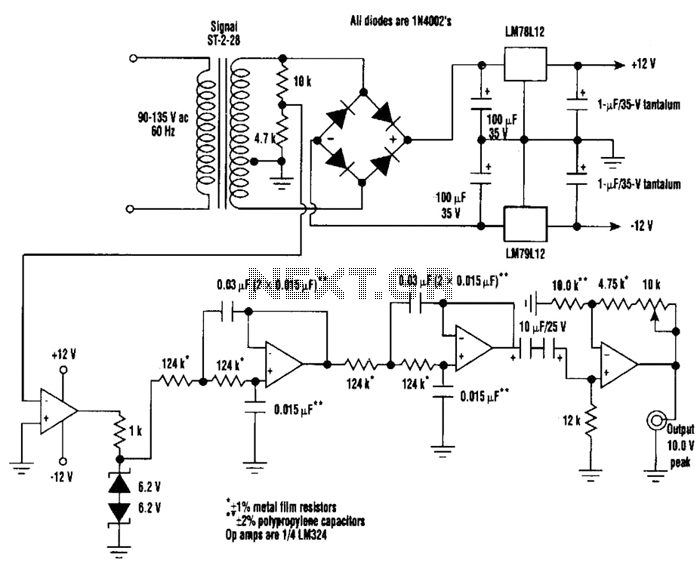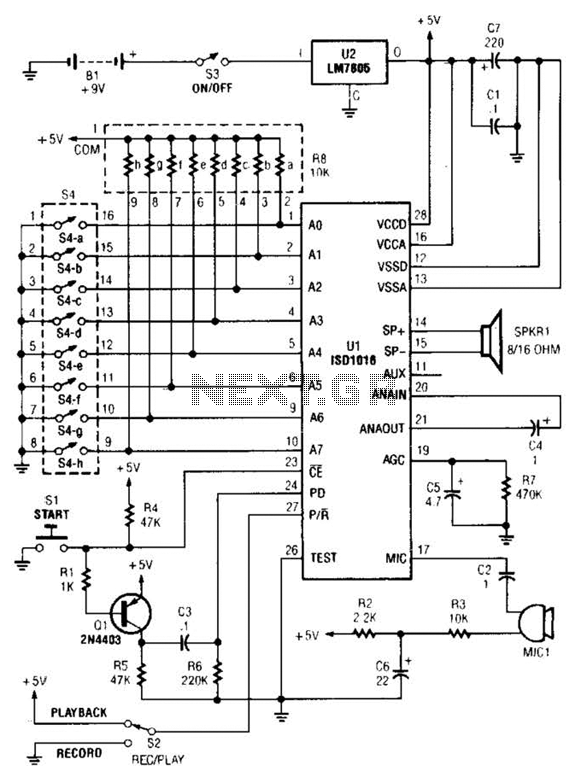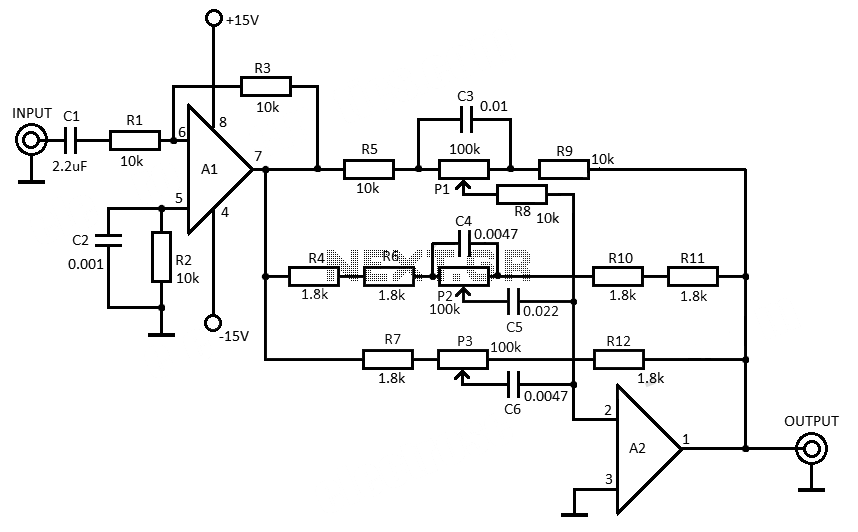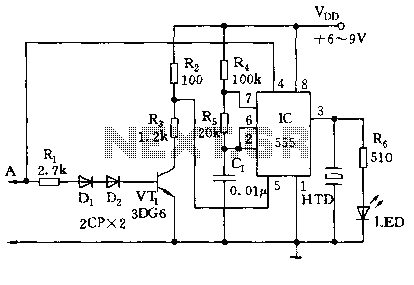
DC generator automatic voltage regulator circuit
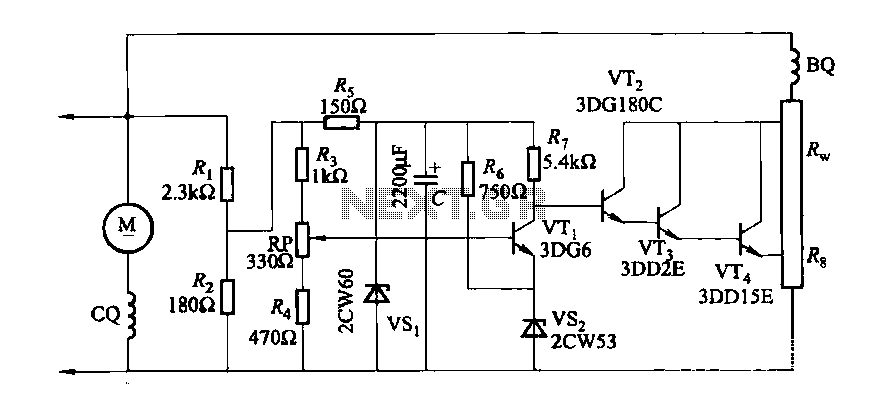
The DC generator automatic voltage regulator circuit is illustrated in Figure 7-53. This circuit is designed for a 40kW, 230V DC shunt complex machine, with a voltage change rate of up to 2.5 percent. In Figure 7-53, BQ represents the shunt winding, while co represents the series winding in conjunction with the external shunt resistor Rw in the winding circuit. The adjustment potentiometer RP allows for modification of the generator output voltage setpoint.
The DC generator automatic voltage regulator circuit is a critical component in maintaining stable output voltage in a 40kW, 230V DC shunt complex machine. The circuit operates by monitoring the output voltage and making necessary adjustments to ensure that it remains within specified limits, with a voltage change rate of no more than 2.5 percent.
In the schematic, the shunt winding (BQ) is connected to the generator's output terminals, which allows it to sense the voltage level. The series winding (co) is incorporated into the circuit along with an external shunt resistor (Rw), which is essential for controlling the overall voltage feedback loop. The presence of the series winding aids in improving the response time of the voltage regulation, especially during load variations.
The adjustment potentiometer (RP) plays an important role in the regulation process. By varying the resistance through this potentiometer, the operator can set the desired output voltage level. This capability is particularly useful during initial setup or when the load conditions change significantly, allowing for fine-tuning of the generator's performance.
Overall, this automatic voltage regulator circuit is an essential feature for ensuring the reliable operation of the DC generator, providing both stability and flexibility in voltage management for various applications.DC generator automatic voltage regulator circuit is shown in Figure 7-53. This circuit is used to 40kW, 230V DC shunt complex machine, the voltage change rate up to 2.5 percent . In Figure 7-53, BQ for the shunt winding, co} for the series winding in series with the external shunt resistor Rw winding circuit. Adjustment potentiometer RP, can change the generator output voltage setpoint.
The DC generator automatic voltage regulator circuit is a critical component in maintaining stable output voltage in a 40kW, 230V DC shunt complex machine. The circuit operates by monitoring the output voltage and making necessary adjustments to ensure that it remains within specified limits, with a voltage change rate of no more than 2.5 percent.
In the schematic, the shunt winding (BQ) is connected to the generator's output terminals, which allows it to sense the voltage level. The series winding (co) is incorporated into the circuit along with an external shunt resistor (Rw), which is essential for controlling the overall voltage feedback loop. The presence of the series winding aids in improving the response time of the voltage regulation, especially during load variations.
The adjustment potentiometer (RP) plays an important role in the regulation process. By varying the resistance through this potentiometer, the operator can set the desired output voltage level. This capability is particularly useful during initial setup or when the load conditions change significantly, allowing for fine-tuning of the generator's performance.
Overall, this automatic voltage regulator circuit is an essential feature for ensuring the reliable operation of the DC generator, providing both stability and flexibility in voltage management for various applications.DC generator automatic voltage regulator circuit is shown in Figure 7-53. This circuit is used to 40kW, 230V DC shunt complex machine, the voltage change rate up to 2.5 percent . In Figure 7-53, BQ for the shunt winding, co} for the series winding in series with the external shunt resistor Rw winding circuit. Adjustment potentiometer RP, can change the generator output voltage setpoint.
